Climate Art Beat®
Winter Calendar 2025
We are pleased to highlight these 12 “must see” live and online climate art events.
Curated Online Art Exhibition
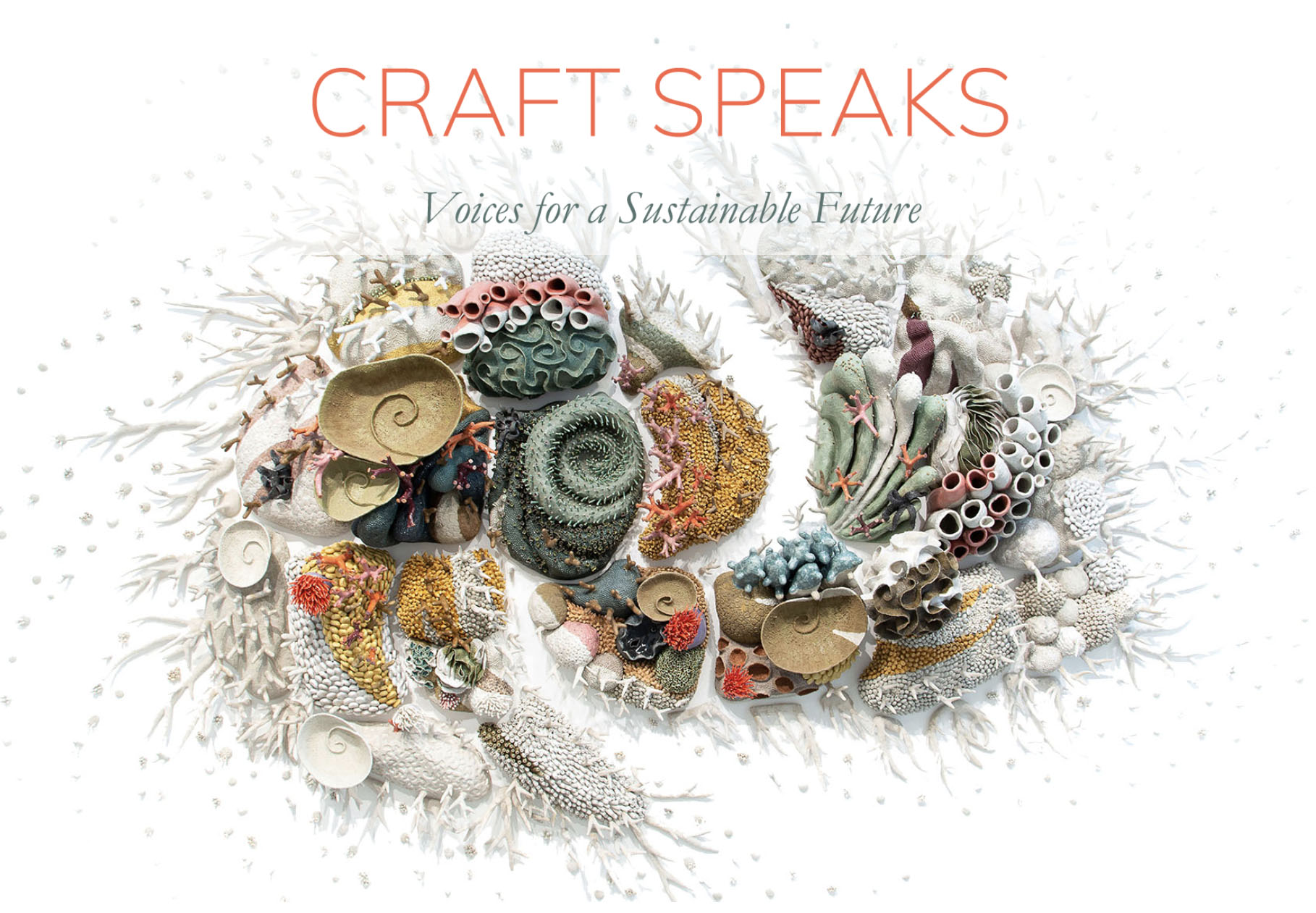
Courtney Mattison, Our Changing Seas IV (2019). Glazed stoneware and porcelain. Dimensions: 11’ x 17’ x 2’. Photograph by Courtney Mattison. ©2019 Courtney Mattison. Courtesy of the artist.
Craft Speaks: Voices for a Sustainable Future
Craft Speaks features work from 30 pioneering artists who guide us to envision and embrace a sustainable future. Their vision and talent offer fresh hope and new insights to a world in need of solutions to environmental challenges.
Winona, MN
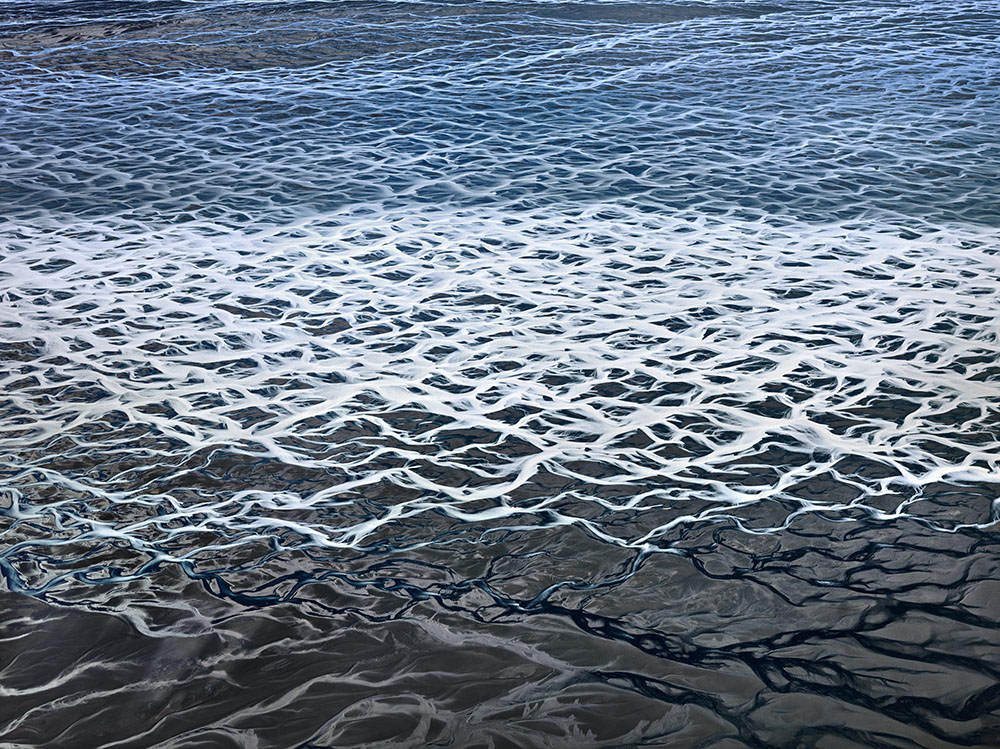
Edward Burtynsky, Glacial Runoff, Skeidararsandur, Iceland, (detail) 2012. Digital chromogenic colour print on Kodak Endura Premier Paper. Photo: ©Edward Burtynsky. Courtesy of the Weinstein Hammons Gallery, Minneapolis and Minnesota Marine Art Museum.
Renowned photographer Edward Burtynsky has traveled the globe to capture images which convey the scale and complexity of human intervention in the natural world. His images are large in scale – as befits the monumental nature of his mission – and are often described as “elegant,” “hauntingly beautiful,” “compelling,” and “unsettling.” The Edward Burtynsky: Water exhibition focuses on photographs tracing the varied roles that water plays in modern life: as a source of healthy ecosystems and energy, as a key element in cultural and religious rituals, and as a rapidly depleting resource. This powerful exhibition invites us to question the consequences of current consumption and resource extraction: what future do we want to build for ourselves and generations to come?
Now through June 22, 2025
New York NY
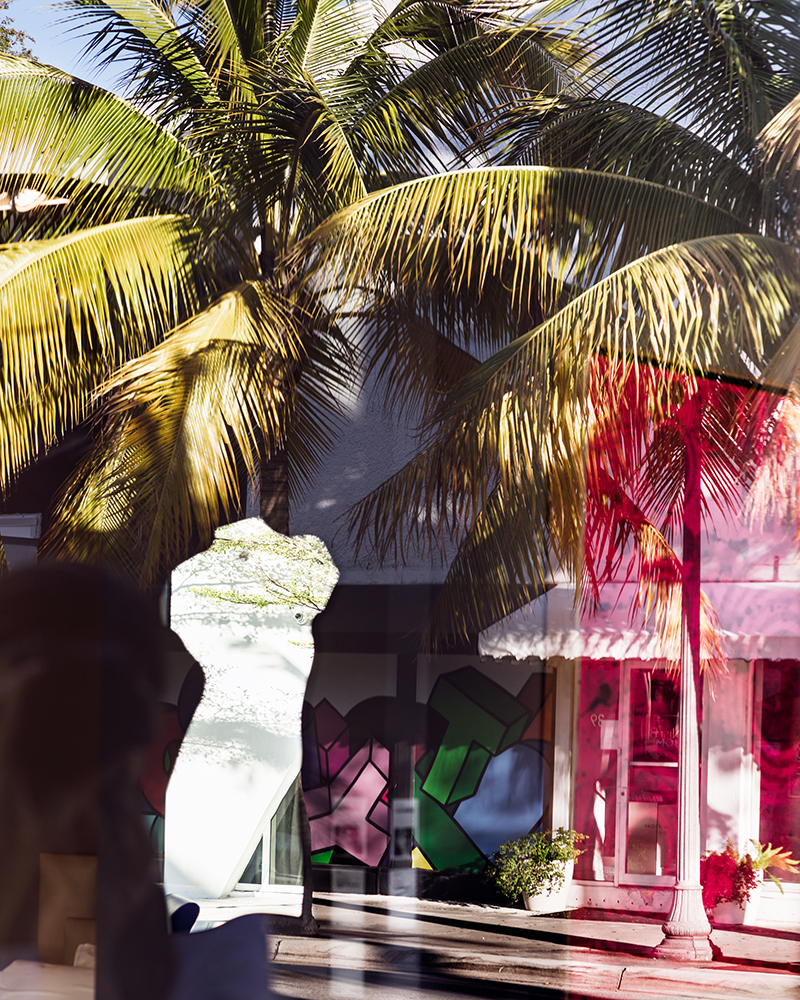
Anastasia Samoylova, Venus Mirror, Miami, 2020. Inkjet print. ©Anastasia Samoylova, 2020. Courtesy of the Metropolitan Museum of Art.
Floridas: Anastasia Samoylova and Walker Evans juxtaposes the work of two documentary photographers: the renowned Walker Evans (1903-1975), who spent 40 years photographing Florida’s unique natural and cultural landscape, and Anastasia Samoylova (born 1984), who relocated to Miami in 2016 and, inspired by Evans, embarked on her own photographic exploration of the State. Samoylova’s initial photographic study, Flood Zone, chronicled “the growing dissonance between [the city’s] booming real-estate market and the ocean’s encroachment on the city’s shoreline.” She concluded: “Living in Miami is bittersweet: it looks and feels like a paradise, but the only secure roots belong to mangrove trees.” In Floridas, Samoylova expands her inquiry, capturing Florida’s many faces: its brilliant sunlight; its rising seas; the cheery Florida-pink of much of its built environment; and the people who determine its future. Collectively, these photographs invite us to ponder: what makes Florida tick? How has that changed – or remained constant – since Walker Evans’ day? And what does this portend for a State on the front line of climate change?
Now through May 11, 2025
New York NY
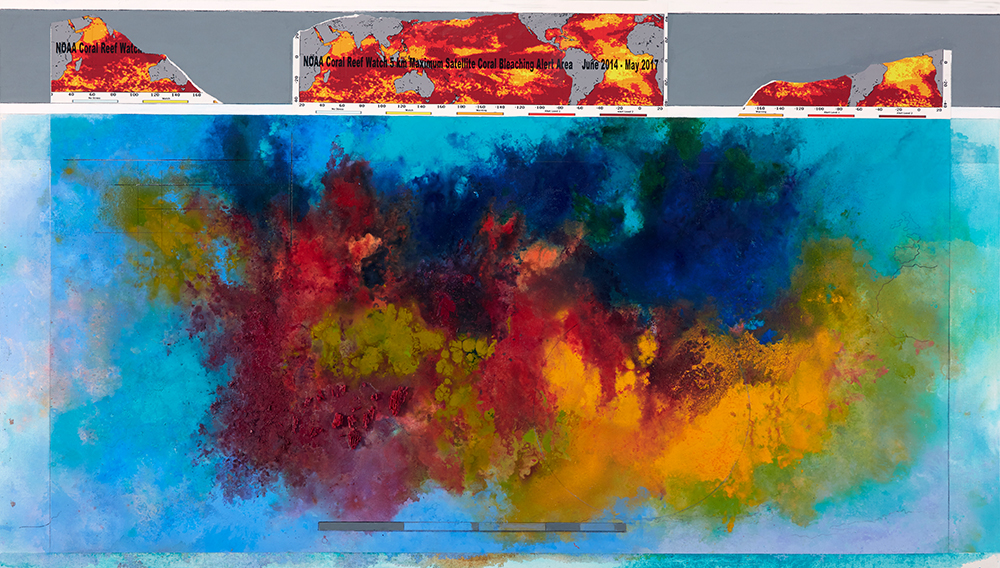
Diane Burko, Reef Map 1, 2019. Mixed media on canvas. 50” x 88” ©Diane Burko, 2019. Courtesy of the Cristin Tierney Gallery.
For five decades, Diane Burko has traversed the globe’s extreme environments, from the Arctic to the Amazon, to compile a visual record “bearing witness” to the realities of climate change. The paintings in Diane Burko: Bearing Witness reflect this journey. Her World Reef series (which includes Reef Map 1) captures coral reef devastation wrought by warming seawater and bleaching. Her World Glacier series depicts the alarming retreat of ice as seas encroach on glaciers. Burko’s paintings draw on scientific data, alluded to with map-like details and other notations in her art. She also employs painting techniques that create textured surfaces echoing the fragility of the natural world. In short, Burko uses “the language of paint” to create “visual poetry that draws you in, compels you to look closely, and then reveals some ugly truths.” The effect is simultaneously powerful and energizing – powerful by virtue of its expressive urgency, and energizing by its celebration of the Earth’s stunning beauty.
Jan. 31 – Mar. 8, 2025
Newport, RI
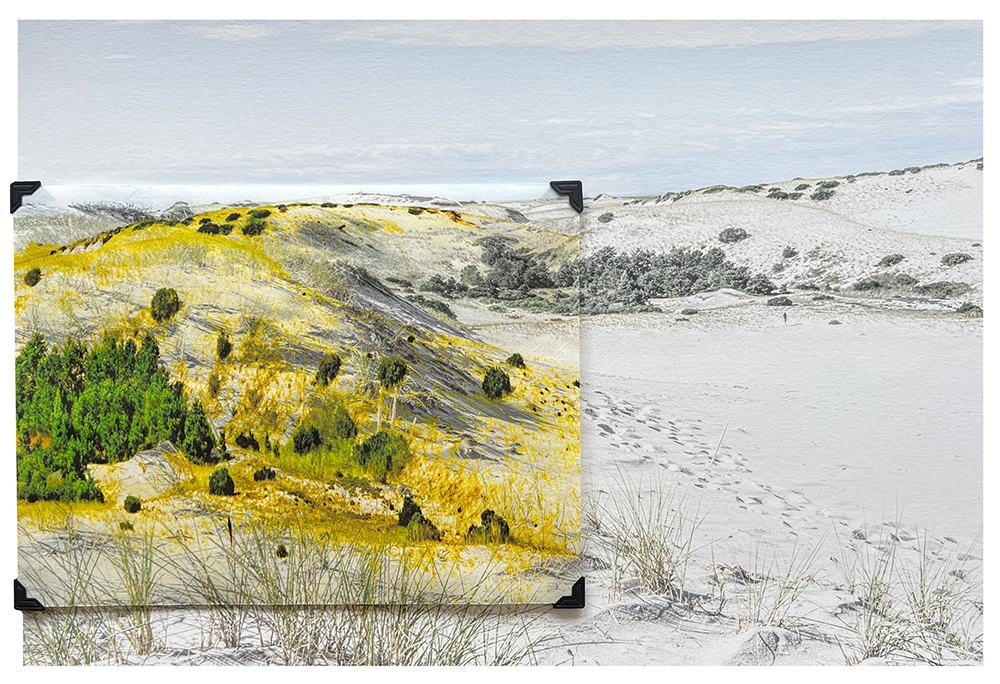
Donna Bassin, Environmental Melancholia. Postcards of Vanishing Environments.26. Pigment print, archival photo corners. ©Donna Bassin, 2022. Courtesy of the Newport Art Museum.
Newport Art Museum (Griswold House)
Donna Bassin: Portraits of the Precarious Earth features a series of photo-based landscapes addressing the psychological impact of our complacency in the face of mounting environmental devastation. Each constructed landscape combines two images from different locations, skillfully unified through the artist’s choice of color and composition into a coherent, if unsettling, scene. In works titled “postcards,” the artist uses photo corners, like those found in scrapbooks, to affix a small image of a lush landscape atop a larger scene of a depleted environment, subtly inviting us to ponder our environmental legacy. In other works, the artist tapes or embroiders an image torn from a verdant scene to that of a barren site, symbolically mending the injury by replenishing the loss. This exhibition is both a powerful call to action and an inspiring affirmation of our capacity as humans to assume collective responsibility for healing the Earth.
Jan. 29 – May 5, 2025
Online Photography Exhibition
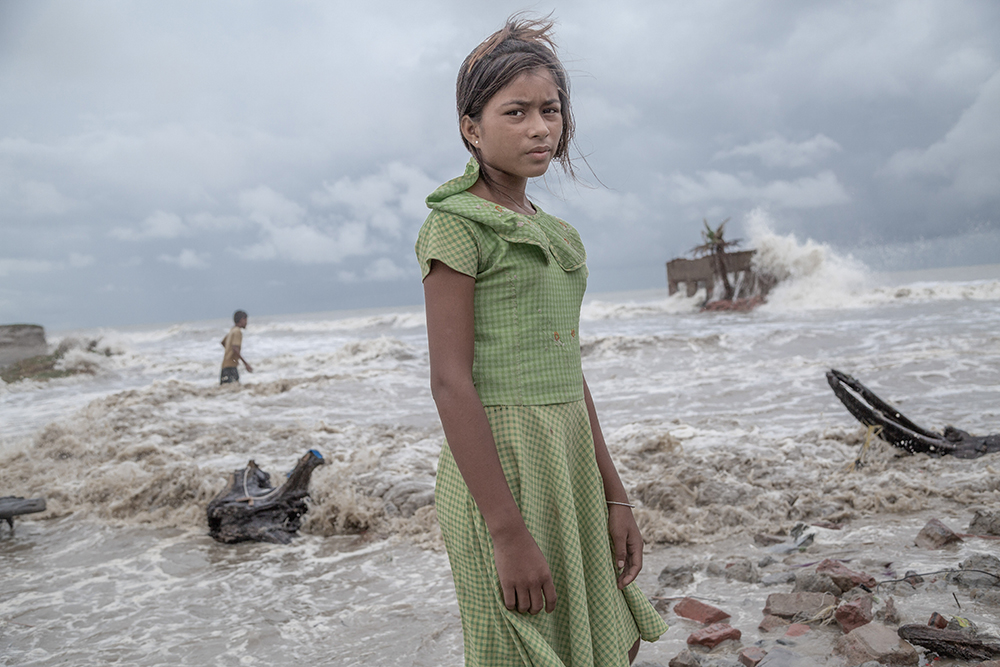
Supratim Bhattacharjee, Sinking Sundarbins. Photograph. ©Supratim Bhattacharjee, 2024. Courtesy of the Mangrove Action Project.
A haunting photograph of a young girl standing before her tea shop, now completed obliterated by sea water, puts a human face on climate change. The photograph, the overall winner of the 2024 Mangrove Photography Awards, captures the impact of one of many cyclones which have struck the Sundarbans in recent years, powered in intensity by rampant deforestation and escalating climate change. The Sundarbans is the largest mangrove forest in the world – and mangrove forests are among earth’s most undervalued ecosystems. The Mangrove Action Project, for its 10th straight year, invited photographers worldwide to raise their visual voices to defend these treasures. The Project’s 2024 Awards Exhibition attracted a record-breaking 2,500 entries showcasing the forests’ pristine beauty, value to humans and wildlife, and vital role in planetary health. Explore all 52 winning photographs for a stunning tour of endangered landscapes.
San Francisco, CA & Online
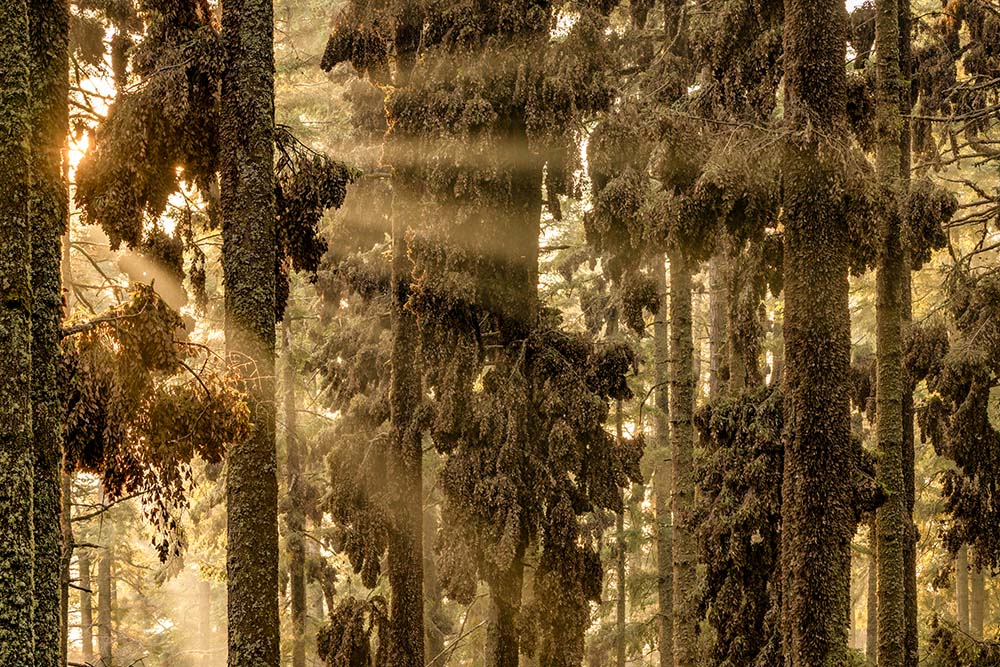
Grand Prize Winner Jaime Rojo, The Forest of the Mangroves. Photograph of the Monarch Butterfly Biosphere Reserve, Michoacán, Mexico. ©Jaime Rojo, 2024. Courtesy of the California Academy of Sciences.
California Academy of Sciences
Big Picture: Natural World Photography
In 2024, the annual – and world-renowned – Big Picture: Natural World Photography Competition drew approximately 7,400 photographs from 70 countries. The winning photos, now on exhibit at both the Academy and online, offer captivating insights into the natural world. For example, Grand Prize winner Jaime Rojo’s image (above) captures immense clusters of Monarch butterflies resting in Mexico after their arduous, 3,000 mile migration from Canada and the U.S. Sights like this may become rare as climate change, deforestation, pesticide exposure and the loss of milkweed plants threaten monarch survival. View the entire gallery of winning photos to witness a mesmerizing tribute to global biodiversity.
Now through Apr 13, 2025
Winona, MN
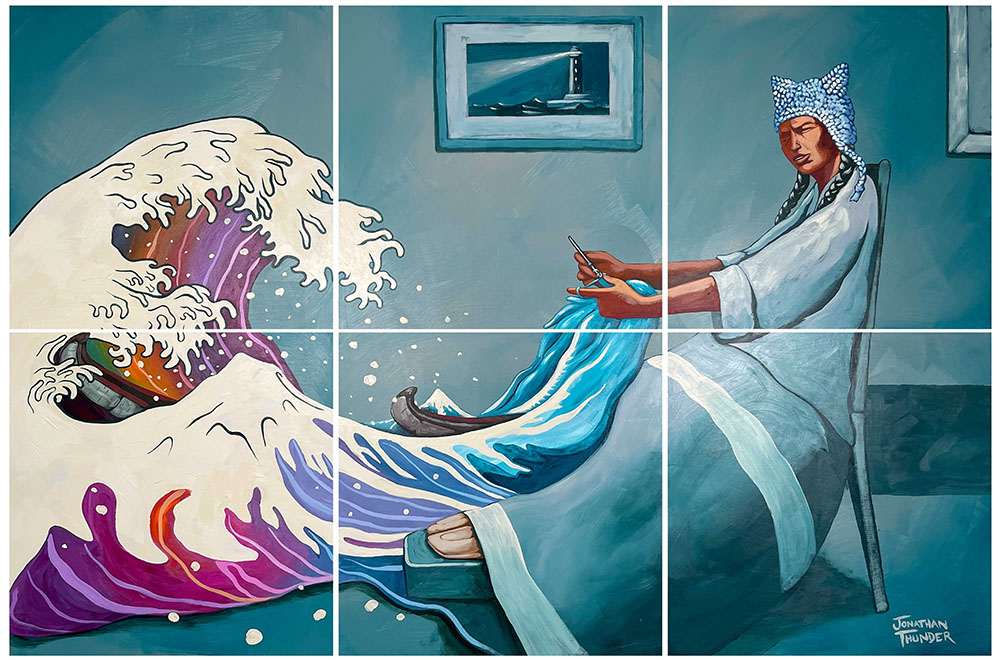
Jonathan Thunder, Night Whistler’s Mother. ©Jonathan Thunder, 2025. Courtesy of the Minnesota Marine Art Museum.
Once Upon A Shore creates a “water’s edge meeting place” where authors, illustrators, artists and others – all members of Native Nations – converge to share stories from an Indigenous perspective. Their stories, centered on our relationships to bodies of water, reflect a culture where humans are a part of nature, not separate from it – and this exhibition invites us to explore that perspective. Participating artist Jonathan Thunder, born on the Red Lake Indian Reservation, grew up in the Twin Cities. His art merges personal experience with social commentary, drawing for artistic inspiration on both Indigenous mythology and contemporary urban culture. Thunder recognizes that while “these two worlds are integrated to me,” they remain “far apart.” His art encourages all viewers to take a critical look at our shared mythologies. How differently would we treat our lakes and rivers if we accepted this invitation?
Jan. 25, 2025 – Jan. 4, 2026
Tucson, AZ
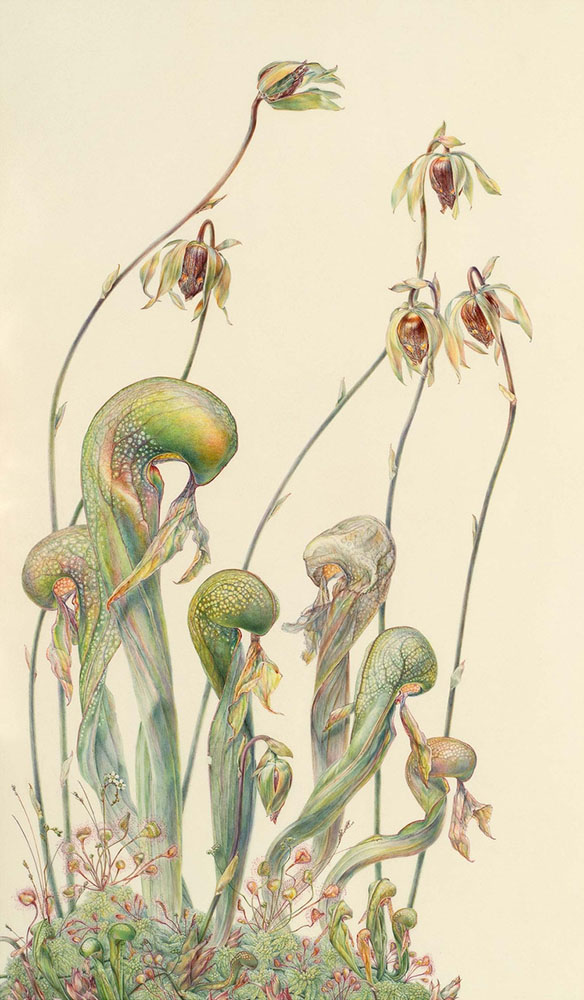
Jean Emmons, Cobra Lilies and Sundews. Watercolor on vellum. ©2023 Jean Emmons. Courtesy of the American Society of Botanical Artists.
Curious Allies: Mutualism in Fungi, Parasites, and Carnivores calls attention to the many environmental benefits resulting from relationships which fungi, lichens, mycrotrophs, and parasitic and carnivorous plants forge with other plants, animals – and even humans. Mushrooms and fungi serve as decomposers, form networks between plants, and clean up environmental toxins. Parasitic plants – widely regarded as “pests” – often play the role of keystone species in ecosystems, enhancing nutrient cycling, providing resources to herbivores or pollinators, and serving human medicinal and cultural needs. Carnivorous plants like cobra lilies and sundews can grow in nutrient-poor environments, keeping insect populations under control. As Carol Woodin, Director of Exhibitions at the American Society of Botanical Artists attests, these plants also have “an oddball beauty.” The 48 paintings in this exhibition showcase that beauty and raise fascinating questions about little-studied, but ecologically significant, plants.
Jan. 18 – June 30, 2025
Gulfport, MS
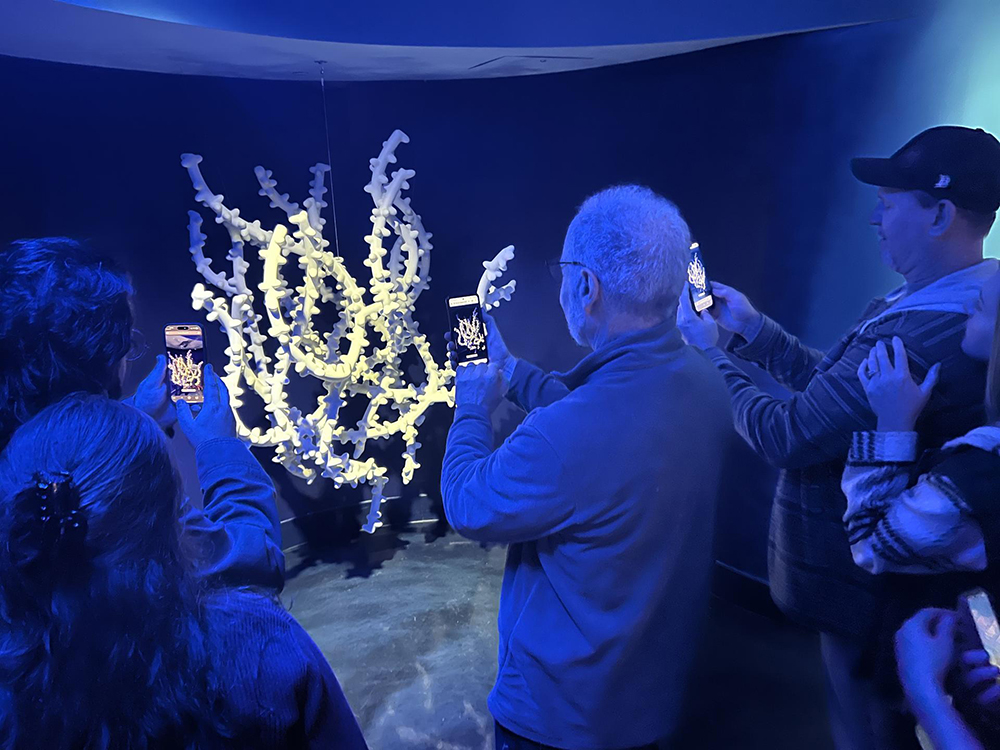
Sasha Francis/National Marine Sanctuary Foundation. Photograph. ©Sasha Francis/National Marine Sanctuary Foundation, 2024. Courtesy of Sasha Francis and Rebecca Rutstein.
The Immersion Project, a multi-sensory installation of sculpture, sound and augmented reality, highlights efforts to restore the Gulf of Mexico’s deep sea coral ecosystem. That ecosystem was severely damaged in 2010 by an explosion on the Deepwater Horizon drilling platform. The explosion killed 11 men, sank the rig, and started a catastrophic leak of 134 million gallons of oil into the Gulf – the largest oil spill in U.S. history! The spill severely damaged deep sea corals, which provide key ecosystem functions: sequestering carbon, recycling nutrients, and offering habitat to countless marine species. An $8.8 billion court-approved restoration plan is now underway. To illustrate its current and future progress, artists and scientists collaborated to create undulating, coral-inspired sculptures, a soundscape that ebbs and flows with the buzz of the coral ecosystem coming back to life, and an augmented reality experience depicting a potential ecosystem recovery over hundreds of years.
Permanent Installation, Open Now
Online Art Exhibition

Carolyn Peirce, Asian Elephant, Recycled paper collage ©2020 Carolyn Peirce. Courtesy of the artist.
Honoring the Future: We, The Ark
We, The Ark features Carolyn Peirce’s playful, yet powerful, recycled paper collages of vulnerable and endangered animals. This online exhibition beckons us to rebalance our broken relationship with nature – in short, to revolutionize how we care for our Earth. An accompanying Educator’s Guide offers free online STEAM resources for teachers of middle through high school students.
Curated Online Art Exhibition
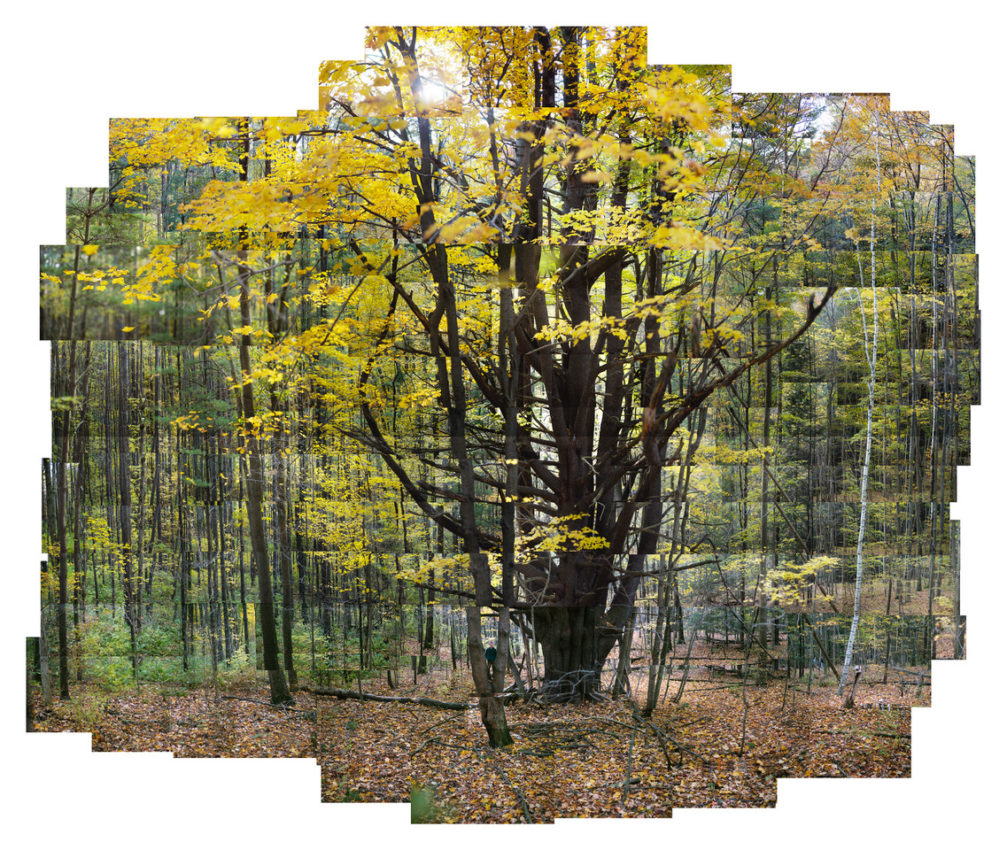
James Balog, Eastern White Pine, Lenox, Massachusetts, October 2002. Photograph. ©2002 James Balog Photography/Earth Vision Institute. Courtesy of the artist.
Honoring the Future: Honoring Trees
Honoring Trees features the work of 14 leading contemporary artists. Collectively, these works invite us to reflect on the splendor of trees, the challenges climate change and human stresses pose to trees, and the opportunity to respond with creativity and courage. The accompanying Educator’s Guide offers links to free, easily accessible videos, articles and other STEAM resources for use in art, science, history, social studies, language arts and civics classes.
